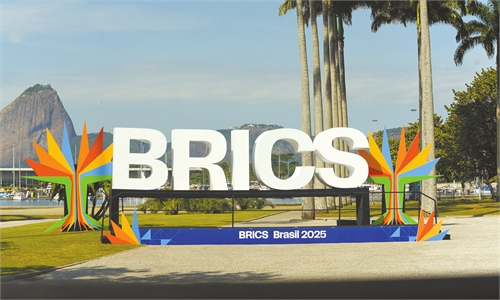Prime Minister Datuk Seri Anwar Ibrahim received the 13MP document from Second Finance Minister Datuk Seri Amir Hamzah Azizan at Seri Perdana, Putrajaya. - Photo: AFIQ HAMBALI / Prime Minister's Office
KUALA LUMPUR: The following are the economic highlights of the 13th Malaysia Plan (13MP) 2026-2030 which was tabled by Prime Minister Datuk Seri Anwar Ibrahim in Parliament today, with the theme "Melakar Semua Pembangunan” (Redesigning Development).”
- Investments of RM611 billion required to successfully implement 13MP
- Development allocation from the government is estimated at RM430 billion, with RM227 billion to be channelled to the economic sector.
- Gross domestic product (GDP) growth is targeted at 4.5-5.5 per cent annually, to be led by domestic demand, particularly private consumption and investment
- Average real private investment is expected to grow by 6.0 per cent per year, while average real public investment is projected to grow by 3.6 per cent per year.
- RM120 billion will be allocated for national development investment for 2026-2030.
- The federal government's fiscal deficit is expected to gradually decrease to below 3.0 per cent of GDP, with government debt not exceeding 60 per cent of GDP.
- The average inflation rate is expected to remain stable between 2.0 per cent and 3.0 per cent annually.
- Gross National Income (GNI) per capita is targeted to increase to RM77,200.
- Gross exports are expected to grow by 5.8 per cent annually, with broader trade opportunities.
- Gross imports are expected to moderate to 6.1 per cent per year from 2026-2030, compared to 14.4 per cent during the first four years of 12MP.
- The trade balance is expected to remain positive at RM116.3 billion, with a current account surplus of 2.2 per cent of GNI by 2030.
- Malaysia aims for Electrical & Electronics product exports to approach RM1 trillion by 2030.
- The government targets to increase halal export value to RM80 billion, with the halal industry contributing 11 per cent to GDP by 2030.
- The manufacturing sector is projected to grow by 5.8 per cent per year.
- RM61 billion will be allocated for development projects under public-private partnership (PPP).
- The services sector is projected to grow by 5.2 per cent per year.
- The agriculture sector is expected to grow by 1.5 per cent per year.
- The mining and quarrying sector is projected to expand by 2.8 per cent annually from 2026-2030, supported by increased production of natural gas and crude oil.
- By 2030, Malaysia aspires to become a high-income nation and be among the world’s top 30 economies.
- Malaysia must rise quickly to lead in technology and produce world-class ‘Made by Malaysia’ products and services by 2030.
- Malaysia sets a direction to lead the Southeast Asian economy in artificial intelligence (AI), digital technology, and renewable energy, aspiring to be an influential global player.
- The National AI Action Plan 2030 will drive talent development, research, and commercialisation of technology to support broad AI adoption.
- Implementation of NIMP 2030 (New Industrial Master Plan), NSS (National Science Strategy), and NETR (National Energy Transition Roadmap) will be intensified in 13MP to drive inclusive and sustainable economic growth.
- The government is considering nuclear energy as one of the clean, competitive, and safe energy sources.
- Malaysia targets to increase the share of installed capacity to 35 per cent by 2030 from 29 per cent at present.
- The government is committed to accelerating the development of the rare earth industry, in cooperation with state governments.
- The government will strengthen the green economy through various initiatives.
- Focus will be placed on strengthening economic integration through Free Trade Agreements (FTA) and resuming Malaysia-EU (European Union) negotiations.
- Malaysia’s participation in FTAs such as Regional Comprehensive Economic Partnership (RCEP), Comprehensive and Progressive Agreement for Trans-Pacific Partnership (CPTPP), and Malaysia-Turkey FTA (MTFTA) will be enhanced to expand markets and strengthen trade relations.
- Malaysia will continue to leverage BRICS and ASEAN to reduce dependency on existing trade partners. - Bernama










